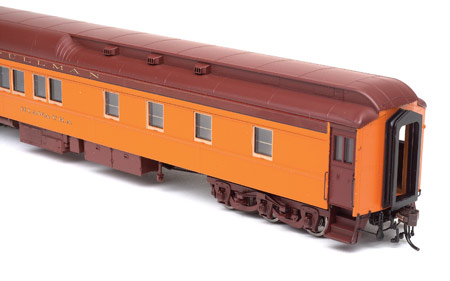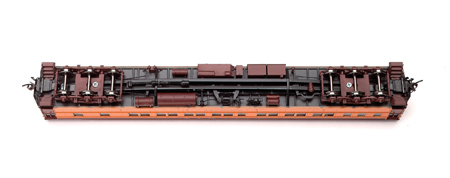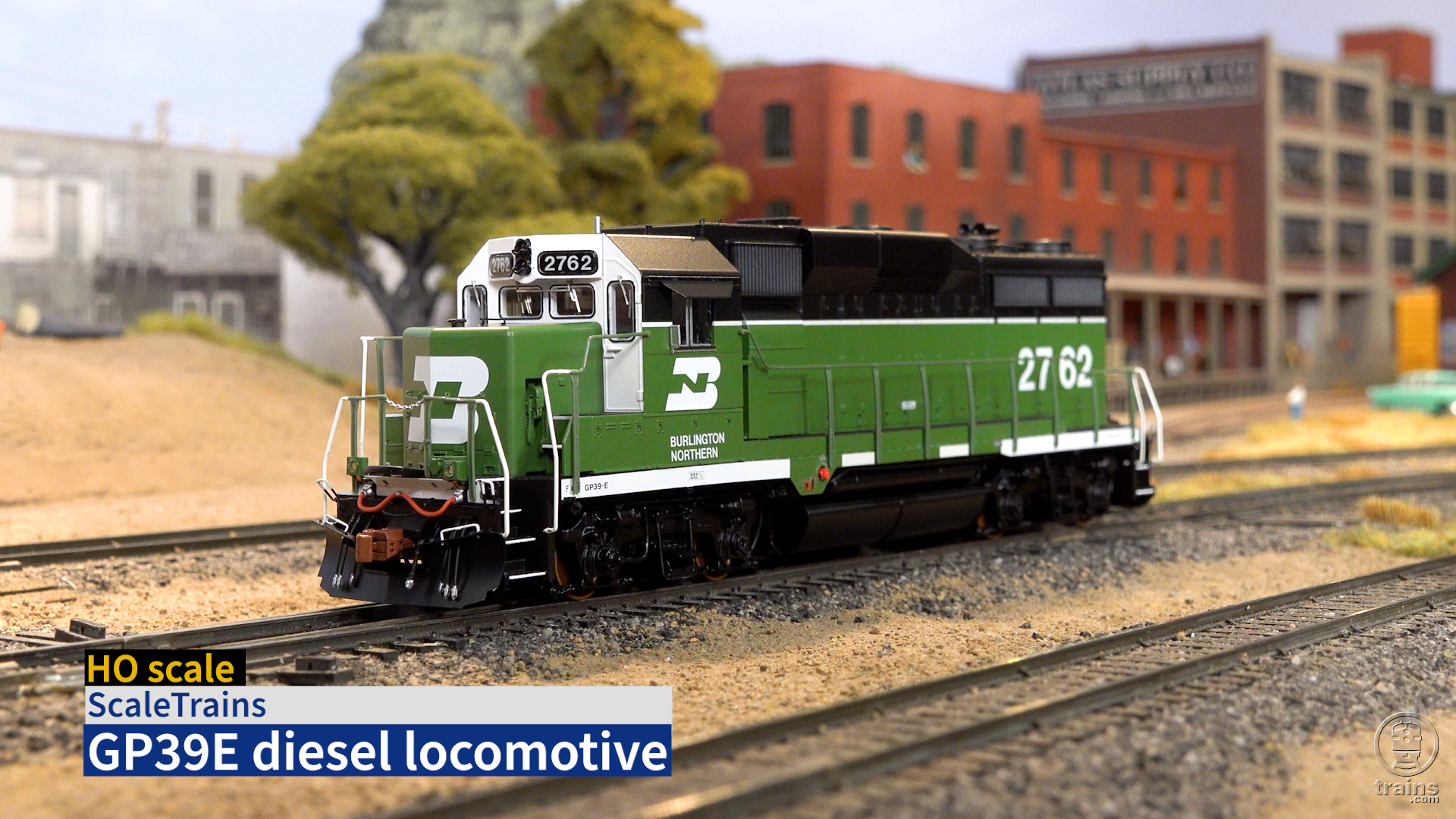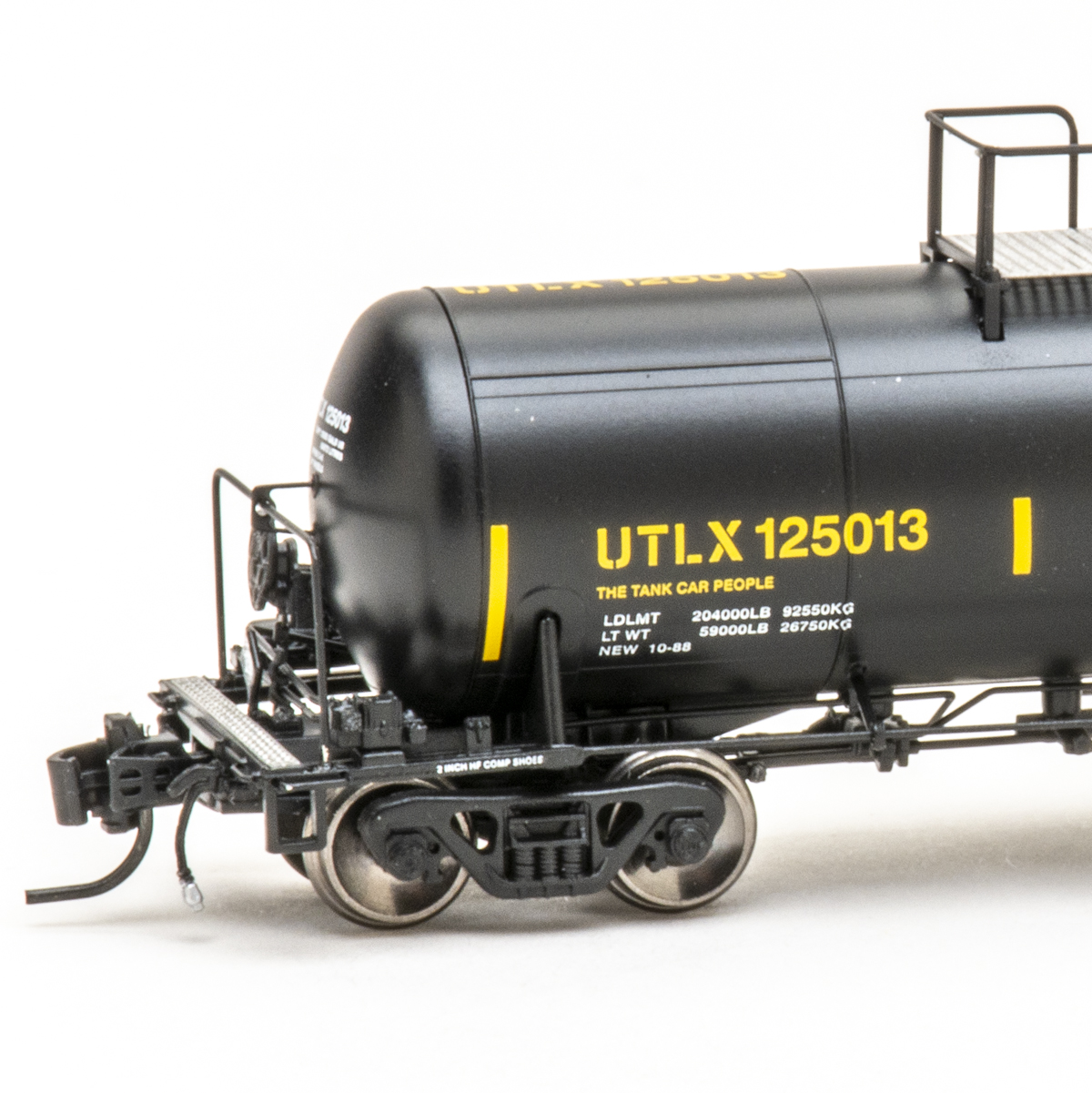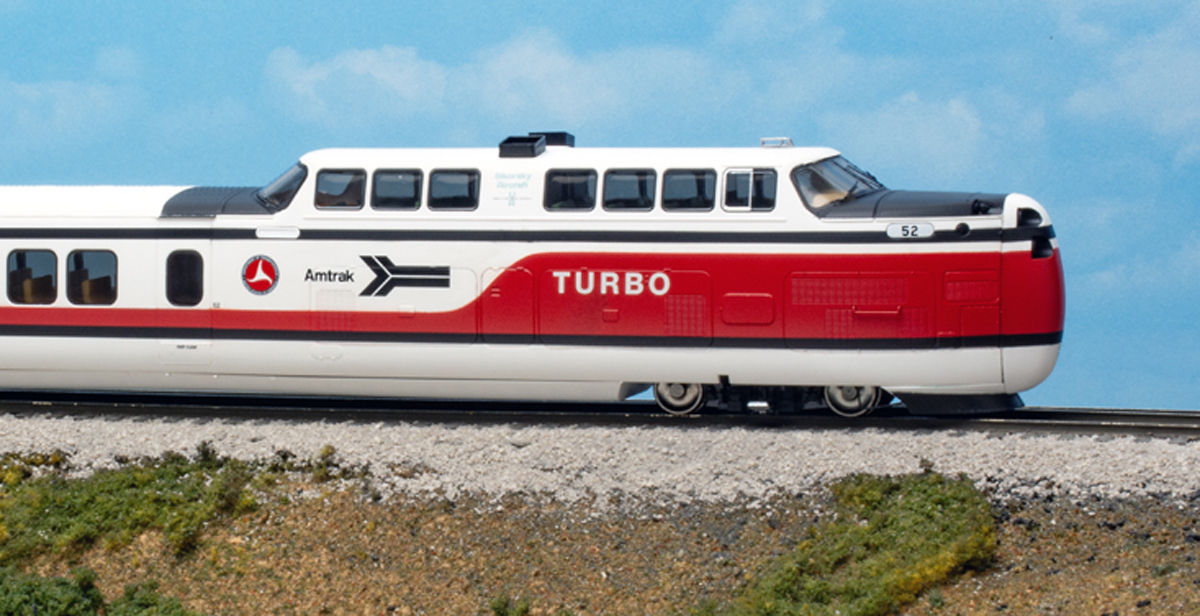Pullman’s standards. The Pullman Co. built standardized sleeping cars and operated them for most railroads. The service was so well-known and widely used that “Pullman” became the generic term for a railroad sleeping car.
A 1940 government suit eventually led to the separation of Pullman’s car-building and operating functions. By 1947, the operating side of the company was sold to the railroads, as were the cars by 1949. The cars were leased back to the new Pullman Co. for operation, and the service continued seamlessly.
For modelers this means that Pullman’s heavyweight sleepers may be appropriate in trains representing almost any prototype. Most standard steel sleepers were built in the 1920s, but with air-conditioning, modernization, and fancy paint schemes, they served into the 1960s.
The car measures a scale 85′-9″ between coupler pulling faces, instead of the prototype’s 83′-5″. This puts the couplers too far past the diaphragms to make a closed connection between coupled cars.
The trucks have a scale wheelbase of 10′-6″, correct for the Pullman type 2410 truck. However, our sample is finished as the Hiawatha, an 8-1-2 car built in 1927 for Milwaukee Road service, which had type 2411R trucks. These were similar to the 2410s but had an 11′-0″ wheelbase and roller bearings.
All the Branchline Pullmans represent cars air-conditioned in the 1930s and include roofs molded with the characteristic “bubble” ducts as well as appropriate underbody equipment for either the Pullman mechanical or ice-activated air conditioning systems.
For example, Hiawatha comes with a casting for the Milwaukee’s steam-ejector-air conditioning cabinet. However, the prototype car also had two 16″ air brake cylinders, while the model has the more- common single 18″ brake cylinder. A diagram of the prototype’s underbody layout is included, but it can’t be duplicated with the kit parts.
The trucks include end beams with brake hanger detail, but the end beams interfere with the center sills and prevent the trucks from sitting level. I removed the portion of the end beams between the brake hanger straps. This allowed the trucks to fit properly, but the remnants of the end beams still restricted the trucks’ swing.
The car wouldn’t operate on 30″-radius curves until I trimmed back the upper corners of the remnant end beams and also removed some of the brake rods and piping that pass behind the wheels. For use on sharper curves, omit the end beams entirely when assembling the trucks. The outboard brake shoes are part of the sideframes, so these most-visible details won’t be lost.
The instructions suggest further modifications to allow the cars to run on 22″-radius curves. However, these scale-length cars won’t look their best on curves that sharp.
The McHenry magnetic knuckle couplers (with coil knuckle springs) are mounted in boxes on pivoting arms similar to the long drawbars used on the prototype cars. The couplers ride slightly high, so the entire coupler arm will have to be shimmed downward to correct the coupler height.
The kit includes a steel weight to be concealed under the interior. The completed car weighs 6½ ounces, which matches National Model Railroad Association Recommended Practice 20.1.
Handsome heavyweights. Branchline is offering painted kits with authentic car names. Although few heavyweight sleepers wore bright paint jobs until well into the streamliner era, the Milwaukee Road’s “yellow and red” (actually orange and maroon) passenger car colors date back to the early 20th century. Branchline has even painted the windows to represent the natural brass sash used on many heavyweight Pullmans – a nice touch.
With details down to uncoupling levers, safety chains, and steam-line connections, the Branchline Pullmans can hold their own with the finest HO models available.
Price: $39.95 each
Manufacturer
Branchline Trains Division of Hobby Stores Distributing Co.
333 Park Ave.
East Hartford, CT 06108
www.branchline-trains.com
Description
Plastic craftsman passenger car kit with trucks and couplers
Road names
(unspecified cars are Pullman Green) Chicago, Milwaukee, St. Paul & Pacific (orange and maroon); Atchison, Topeka & Santa Fe, (two-tone gray); Atlantic Coast Line; Baltimore & Ohio (blue); Canadian National; Chesapeake & Ohio; Great Northern; Illinois Central (brown and orange); Louisville & Nashville (blue and silver); New York Central (two-tone gray); Pennsylvania (Tuscan Red); Pullman; Soo Line (Maroon); Southern Pacific; Wabash (blue); painted Pullman Green but unlettered; undecorated
Body-mounted couplers
Car end details include steam,
air, and signal lines, uncoupling
levers, and safety chains
Detailed body shell
Full interior
Individual grab irons
Six-wheel trucks with darkened metal RP-25 contour wheels
Underbody equipments including brake gear, battery boxes, tool boxes, generator, air reservoirs, steam traps, and piping
Working diaphragms (see text)





